藝評
Central Police Station: Hong Kong's Next Independent Art Space?
約翰百德 (John BATTEN)
at 11:30am on 21st January 2015
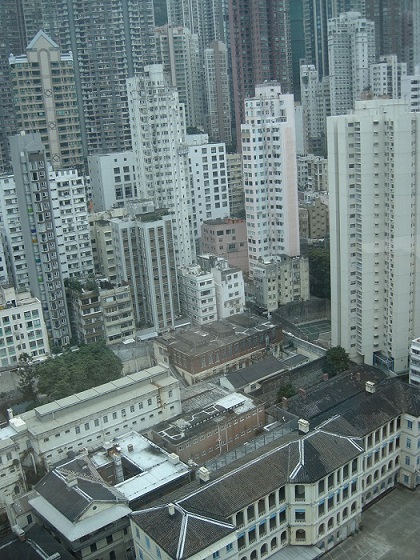
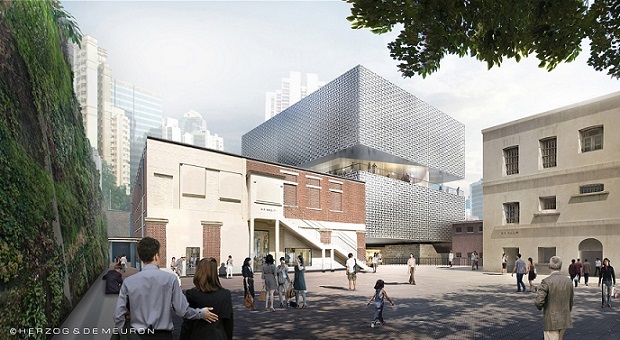
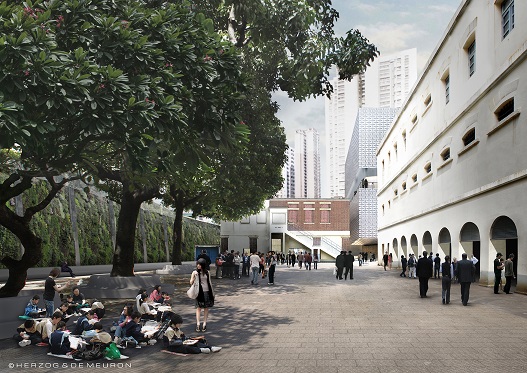
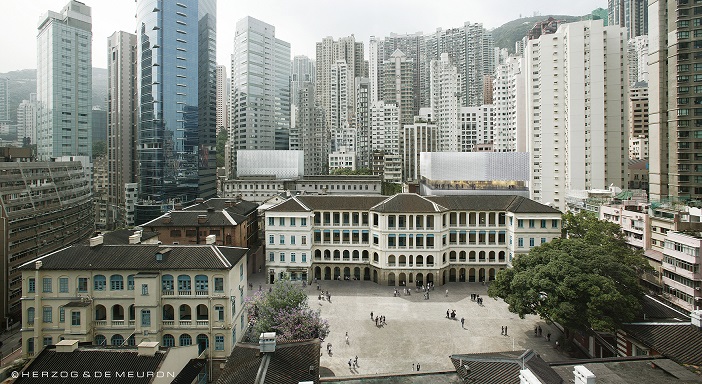
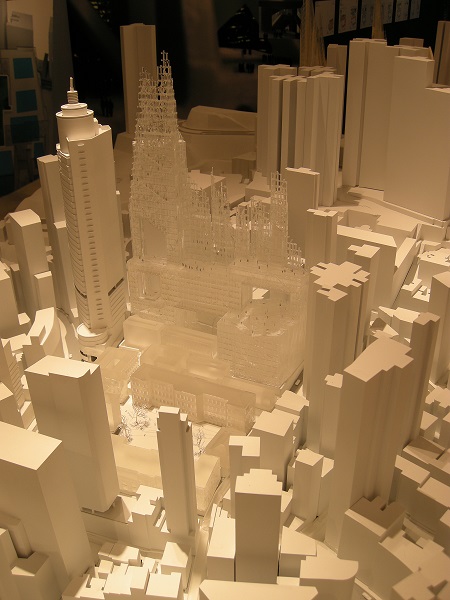
Captions:
1. Aerial view of Central Police Station before renovation, showing area which will house new art facilities designed by Herzog & de Meuron (and where the original 'bamboo' design was to be built). Photo: John Batten.
2.-4. Designs by Herzog & de Meuron for new Central Police Station arts facilities.
5. Model of original 2007 Herzog & de Meuron bamboo scaffolding-inspired "porous" design for Central Police Station. Photo: John Batten.
(原文以英文發表,題為「中區警署:香港下一個獨立藝術空間?」。)
Hong Kong’s bamboo scaffolding, ubiquitously used on the city’s tallest buildings, make it a memorable and iconic sight. Its lightness, incredible flexibility and strength make bamboo scaffolding ideal for construction projects in tight spaces – which are the majority of Hong Kong building sites. Bamboo’s characteristics are often compared to the indomitable spirit of Hong Kong people and it is an irony that bamboo’s use in the construction industry has a hollow symbolism as the city’s property prices make it difficult for even the middle class to purchase the smallest of flats.
The city’s bamboo scaffolding partly inspired the design of a great building that was never built. The Swiss architects Herzog & de Meuron were commissioned in 2007 by the Hong Kong Jockey Club (HKJC) to design a new addition to the historic former Victoria Prison and Central Police Station (CPS). It was a large “porous high-rise structure” that contained a “vertical garden” and theatres, galleries and viewing platforms, with a profile inspired by a banyan tree clinging to a wall, visually displaying the tree’s weight evenly cantilevered to maintain balance. These conceptual ideas led to the finished design of a high-rise glass bamboo scaffolding-like structure. It replicated elements of Herzog & de Meuron’s earlier design for the Walker Art Centre in Minneapolis, USA.
However, this brave design inspired by common Hong Kong features was considered by heritage conservation advocates, including myself, to be inappropriate for a low-rise 150 year-old historic former prison and police complex. Simply, the new structure would have overwhelmed the delicate historic CPS buildings and neighbourhood residential buildings. It was strongly argued that the focus of the site, and any new buildings, should complement and be sensitive to the existing buildings and the soul of its penal and police history. Nearby Mid-levels residents agreed and after vocal, public objections, the original design was shelved.
The CPS is Hong Kong’s most important intact precinct of historic colonial buildings. The responsibility for its renovation and re-use for the community was given by the government to the HKJC’s charity arm. After these initial plans were cancelled, the CPS was re-assessed and a belated heritage study was commissioned by the HKJC. The CPS was properly surveyed, and re-evaluated for the potential of its existing heritage buildings. A study by the Asia Art Archive, and long identified by Hong Kong’s visual arts community, confirmed that Hong Kong lacked a world-class independent contemporary art centre.
Herzog & de Meuron was given a re-focused design brief and the refined, and current design is two new low-rise buildings housing art galleries and a small theatre using classical rectangular architecture replicating the form of the site’s existing heritage buildings. These new buildings will be inserted on the edge of the upper levels of the historic CPS complex amongst the former prison buildings. The new buildings are currently being built and the foundation work can be seen from Old Bailey Street and Arbuthnot Road. The new arts facilities are expected to be ready for occupation in two years’ time.
The new contemporary art centre will join a variety of other facilities and activities for visitors, including stories of police and prison history, heritage tours and changing heritage displays. Commercial shops and restaurants will predominantly be housed near the Hollywood Road section of CPS. The HKJC has, under a ten-year agreement with the government to operate the entire CPS complex, incorporated a separate company to be responsible for the operations of the CPS.
The HKJC is now formulating the operation and governance of the CPS and the new contemporary arts facilities. In an initial idea to find an outside operator for the arts operations, a HKJC appointed selection committee, of which I was a member, recently recommended that none of Hong Kong’s existing arts organizations that had bid to operate the arts facilities met the expected criteria.
The HKJC will not operate the CPS complex itself, but the new company’s management will report to an independent board of governance and arts and heritage committees to encourage the CPS and its continuing programming to be responsive to community aspirations and needs. The governance of the CPS should be independent and the contemporary arts centre, under the direction of an art curator and independent board of management, will have freedom in the programming of innovative art exhibitions. This meets the HKJC’s wish to give a “gift to Hong Kong” by paying for the CPS’s considerable renovation costs.
In early 2015, a section of the renovated former police headquarters building on Hollywood Road will be opened for the press and community to view plans of the site’s future programming and the progress of renovations and construction of new buildings. The heart of any cultural organization is programming; what it does and how it does it: bold and innovative is the key to success. Hong Kong needs an independent, contemporary art centre for greater arts diversity and be individually different from existing government-funded museums and West Kowloon’s future M+.
A version of this essay was published in The Peak magazine, January 2015.
